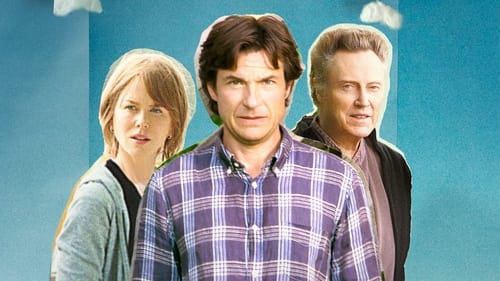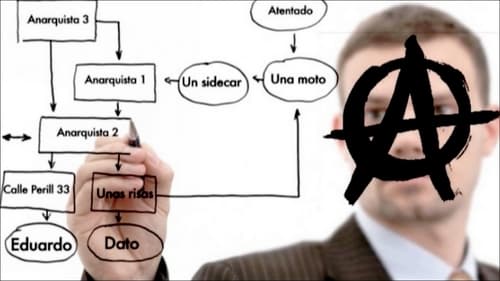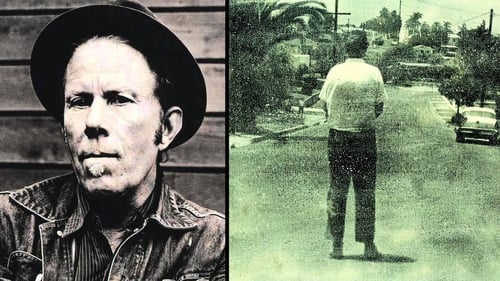This Not That: The Artist John Baldessari (2006)
ジャンル : ドキュメンタリー
上映時間 : 1時間 28分
演出 : Jan Schmidt-Garre
シノプシス
John Baldessari is one of the pioneers of conceptual art, which revolutionized contemporary art in the 1960s, and is still a profound influence on young artists today. The film shows John Baldessari in all aspects of his work: as an artist in his studio, with the technicians he collaborates with, as a teacher interacting with his students, as a passionate observer of the contemporary scene and visiting the Biennale in Venice as well as the Basel Art Fair. This film provides us with insights into the work of a radically modern-thinking artist and sharpens our perception of the often inaccessible world of contemporary art.

A brother and sister return to their family home in search of their world famous parents who have disappeared.

The sarcastic account of the assassination of five Spanish politicians between 1870 and 1973 is mixed with the narration of five short stories by Edgar Allan Poe illustrated by five skillful pencil artists. A bastard documentary, a video essay, a collage, a provocative experiment where various pop culture figures and icons perform unexpected cameos. The macabre joke of a jester. Never more.

An opera for television by Robert Ashley. Set in the American Midwest, it is “about” bank robbery, cocktail lounges, geriatric love, adolescent elopement, the changing of the light at sundown, et al. One of the definitive text-sound compositions of the late 20th century, it has been called "the most influential music/theater/literary work of the 1980s".

Untitled Fall '95 takes the form of a wryly humorous video diary of an art school student (sharply played by Bag) in the midst of “finding herself” in New York City. We can see the diarist physically and emotionally evolving throughout her eight semesters in the Big Apple. Such onscreen “confessionals” stem from the first major example of reality TV, The Real World. Interspersed throughout are commercial-like vignettes that further critique what it’s like to live in the world today. In Untitled Fall '95, Bag displays a profound self-awareness that evokes empathy on behalf of the viewer, despite her work’s glaring artificiality.

The epic life of a world-class artist, jammed into six minutes.

a visualization of a poem telling a story of making a piramid out of a mountain

Shot in his garage-studio, the camera records Ader painstakingly hoisting a large brick over his shoulder. His figure is harshly lit by two tangles of light bulbs. He drops the brick, crushing one strand of lights. He again lifts the brick, allowing tension to accrue. The climax inevitable—the brick falls and crushes the second set of lights. Here the film abruptly ends, all illumination extinguished.

This short film is part of a mixed media artwork of the same name, which also included postcards of Ader crying, sent to friends of his, with the title of the work as a caption. The film was initially ten minutes long, and included Ader rubbing his eyes to produce the tears, but was cut down to three and a half minutes. This shorter version captures Ader at his most anguished. His face is framed closely. There is no introduction or conclusion, no reason given and no relief from the anguish that is presented.

One of a series of ‘falls’ by Bas Jan Ader that he recorded on film, this work was filmed in West Kapelle, Holland in 1970.

Bas Jan Ader hangs from the branch of a tall tree, until he loses his grip and falls into a river below.

Conceptual-structural film by Branko Karabatić exploring media and television.

Druga linija aka The Other Line is a product of many years of research of neo-avant-garde cultural and art scene in Novi Sad, Serbia (late 60s and 70s), which has been marginalized until today. This artistic movement was directly connected not only with important art centers of the former Yugoslavia, but also with existing flows of world art during its brief and productive activities (7e Biennale de Paris, 19th Berlinale). The cultural and artistic emancipation of that time had implied individual freedom of expression and strong reaction to established boundaries. This avant-garde movement had become threat to communist establishment, the authors' work were sabotaged, the films were sealed off, five artists were taken to trial, two were sent in prison. How is it that the retrograde mechanism of shutting down and removing the most creative and representative progressive impulses of our surrounding is still so current to this day?

Guy Ben-Ner, one of Israel's foremost video artists, gained international recognition with a series of low-tech films, starring his family in absurdist settings carved out of their intimate spaces and their everyday surroundings. Many of his videos are inspired by screenplays for films, folktales and novels. Analyzing these literary and cinematographic passages allows him to exploit the conventions of film narrative: how to tell a story, captivate an audience through a tale, sustain a degree of tension and entertainment, and so on. At the same time, he corrupts the magic of fiction by openly showing us the entrails of everything he records, without worrying about revealing the tricks of the trade. A large part of his filmic oeuvre features a conglomeration of cinematic and literary references which the artist quotes, adapts or interprets. Ben-Ner self-referentially links the great themes and their literary, cinematic and artistic realization.

A concept film from Imogen Heap and Thomas Ermacora, made with crowd-sourced video footage, creating a nature film accompanied by an Orchestral score composed by Heap.

An inspiring 75min DIY documentary film on new art and the young artists behind it. It was all filmed on the heat of live action of the first NOVA Contemporary Culture Festival, July and August 2010 in São Paulo, Brazil.

The opening of The Vasulka Effect couldn’t be more apt: Steina Vasulka addresses her husband Woody through various TV screens. He does the same and replies. A perfect image of the relationship between the free-spirited, groundbreaking pioneers of video art. After meeting in Prague in the early 1960s, they relocated from Czechoslovakia to New York, where they later founded The Kitchen, their legendary art and performance gallery.

The Nightwatch documents an action realised by Alÿs in 2004 in which he released a fox into London’s National Portrait Gallery in the middle of the night and used the museum’s CCTV system to follow its movements. The institution was chosen because unlike other institutions it does not conceal its CCTV cameras.

'Boezem's face appears on the screen, stares at the viewer, and begins to breathe on the picture tube. After some time passes, the image begins to blur through the moisture deposited and the artist disappears from sight for several moments. While the vapour clears Boezem keeps his gaze directed on the camera, motionless, until his face is again clearly visible.

In an ironic reference to body art, process art and performance, Baldessari challenges definitions of the content and execution of art-making. Performing with deadpan precision, he moves his hands, arms and entire body in studied, minute motions, intoning the phrase "I am making art" with each gesture. Each articulation of the phrase is given a different emphasis and nuance, as if art were being created from moment to moment. This index of body movements is ironically offset by the repetitive monotony of the exercise.








